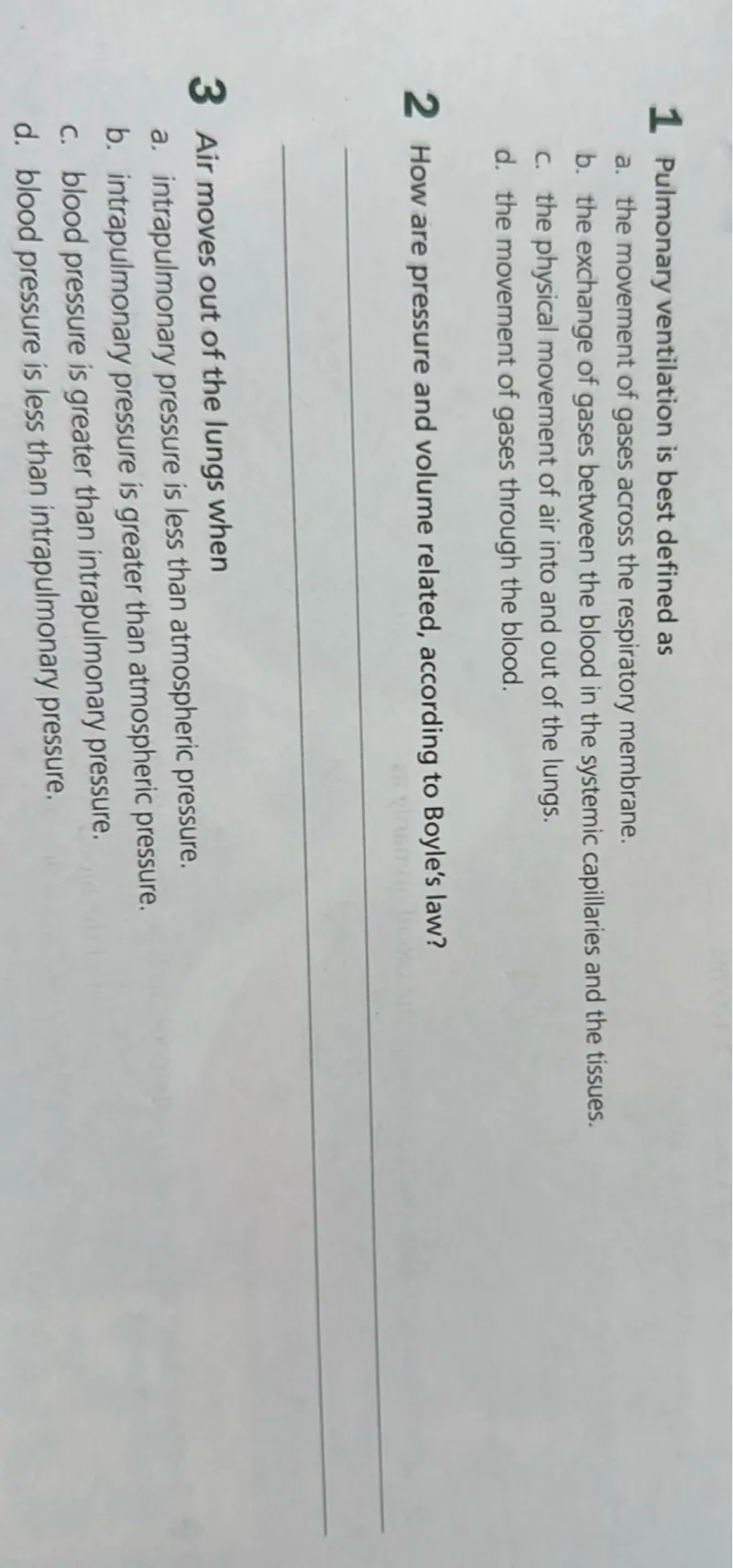Questions: 1 Pulmonary ventilation is best defined as a. the movement of gases across the respiratory membrane. b. the exchange of gases between the blood in the systemic capillaries and the tissues. c. the physical movement of air into and out of the lungs. d. the movement of gases through the blood. 2 How are pressure and volume related, according to Boyle's law? 3 Air moves out of the lungs when a. intrapulmonary pressure is less than atmospheric pressure. b. intrapulmonary pressure is greater than atmospheric pressure. c. blood pressure is greater than intrapulmonary pressure. d. blood pressure is less than intrapulmonary pressure.

Transcript text: 1 Pulmonary ventilation is best defined as
a. the movement of gases across the respiratory membrane.
b. the exchange of gases between the blood in the systemic capillaries and the tissues.
c. the physical movement of air into and out of the lungs.
d. the movement of gases through the blood.
2 How are pressure and volume related, according to Boyle's law?
$\qquad$
$\qquad$
3 Air moves out of the lungs when
a. intrapulmonary pressure is less than atmospheric pressure.
b. intrapulmonary pressure is greater than atmospheric pressure.
c. blood pressure is greater than intrapulmonary pressure.
d. blood pressure is less than intrapulmonary pressure.





